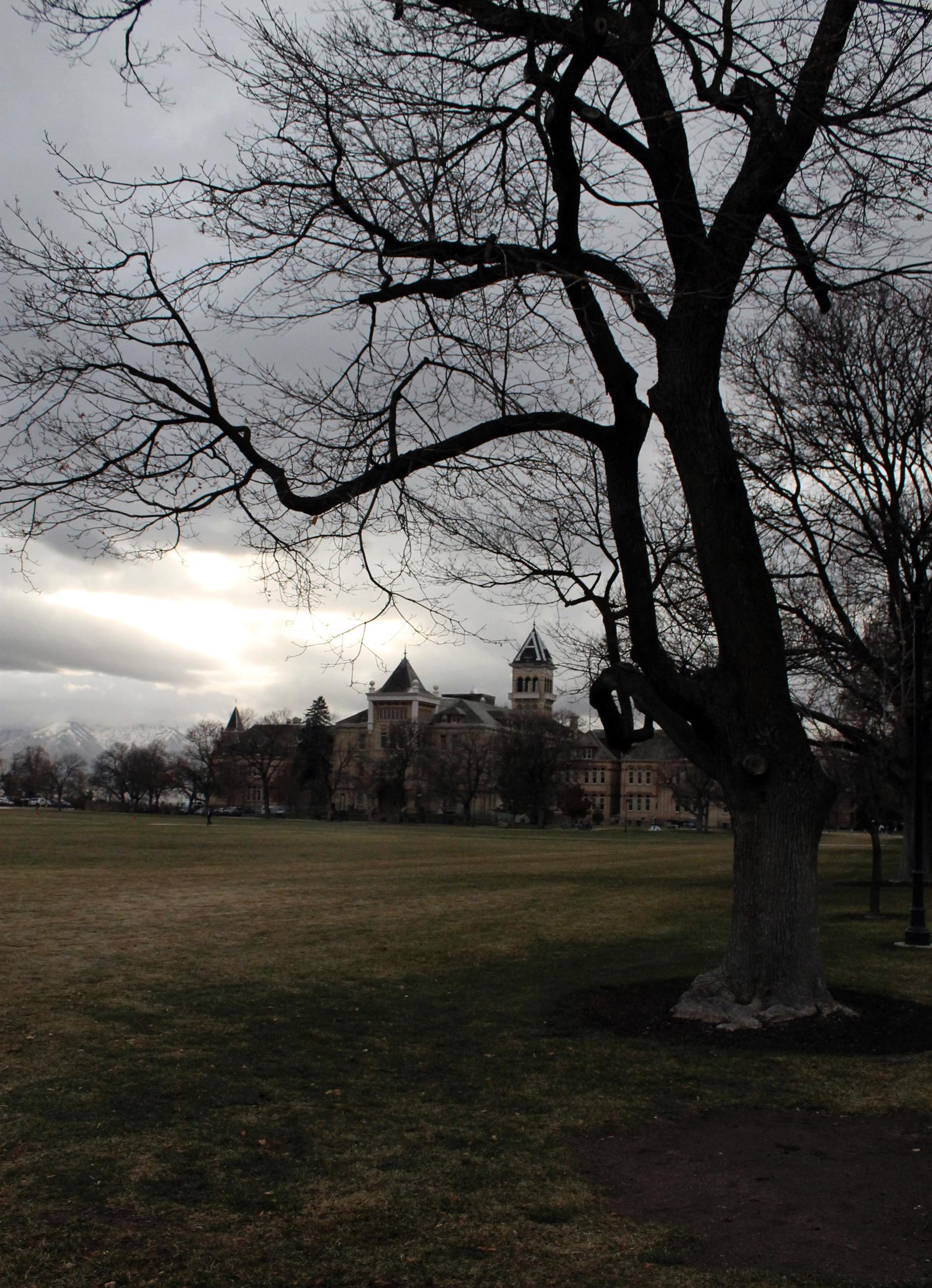USU plans revitalization for trees on campus
As a result of potential safety hazards created by the maple trees surrounding the Quad, USU’s Arboretum Committee has developed a master plan to replace the trees. The plan has been five years in the making and will be initiated this spring.
“Ultimately, we will plant 48 trees,” said Stanley Kane, the university architect and director of operations.
The trees, which will be planted on all four sides of the Quad by the landscape stuff under the direction of the on campus arborist, are London planes.
Rob Reeder, the director of landscape operations, said the goal of the master plan for the trees on the Quad is a safe and gradual transformation. Reeder said as the new London planes trees grow, they are going to prune back the branches of the old maple trees to allow room for the London planes to grow. This will not happen in the near future, he said.
The Arboretum Committee doesn’t plan to cut down older trees until the new trees are planted, unless particular trees become safety hazards for students, Reeder said.
This may be the case for the trees on the east side of the Quad.
“We don’t want a tree limb to fall down and hurt someone so we are having a safety check, which we do annually, but we are just having a second opinion this fall,” Kane said.
If this second opinion deems the east side trees unsafe, they will be removed instead of gradually taken down with the rest of the maples, Kane added.
The trees may become dangerous because they are aging, Reeder said.
“They have a natural lifespan which we are coming to the end of,” Reeder said.
According to Kane, this concern began to develop five years ago after a windstorm blew some branches off of the south trees near the Ray B. West Building, which have since been removed.
“We began to have concerns about some of the trees being healthy,” Kane said. “The branches were black and decayed inside. Fortunately, we have not had people seriously injured.”
Shortly after the wind storm the Arboretum Committee, which consists of faculty from the College of Natural Resources, Extension, the College of Agriculture staff, an arborist and an outside landscape contractor, began to develop the master plan to replace the maples, of which the youngest ones are about 80 years old, Kane said.
“It has been a very gradual and incremental process to develop this plan with the most input from all of campus as possible,” Kane said. “This is the first master plan to only look at planting.”
It was the Arboretum Committee who selected the london planes.
“When we started this, we were worried about species diversity,” Kane said, “We came to a consensus of uniform trees on the Quad.”
The new London planes will eventually be the only trees on the Quad. These trees were selected for ideal form, scale, color and resistance to disease.
“The Quad has always been a multi-use space, so it is a very significant space,” Kane said. “Plus, it is very beautiful.”
He said the hope for the London planes is that they will be noticeable within five years and will add to the beauty of the Quad.
Reeder projects it will be at least 100 years before the London planes get to a point where they have to be removed.
“I don’t think any of us will be around to see it,” Reeder said. “They will keep growing until they die.”
– jerawood@aggiemail.usu.edu

